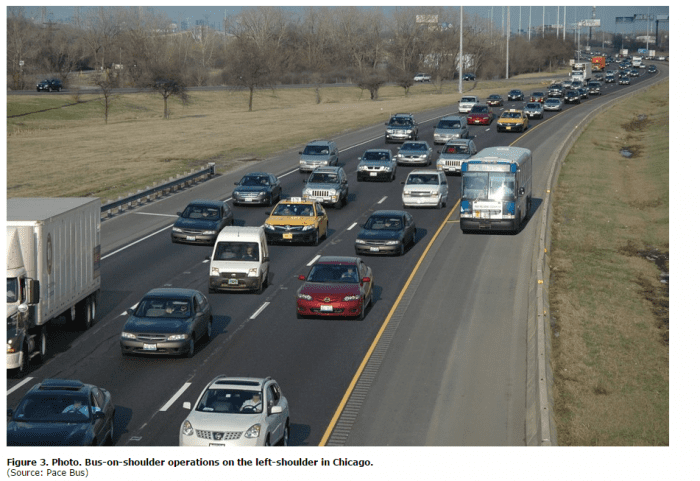June 30, 2016
A growing number of states in the United States are learning how part-time shoulder use can help manage congestion and want to put this strategy into practice. Until recently, however, there was no national document on how to plan, design, and implement part-time shoulder use.
That changed in February with the publication of the Federal Highway Administration’s “Use of Freeway Shoulders for Travel “” Guide for Planning, Evaluating, and Designing Part-Time Shoulder Use as a Traffic Management Strategy.”

The guide explains that part-time shoulder use converts paved roadside shoulders to an area used for travel during certain portions of the day to help relieve congestion. Also known as temporary shoulder use or hard shoulder running, it is most often implemented on freeways. The guide notes that it can be a cost-effective solution to improving operations and safety by providing additional capacity when it is needed most, while preserving the use of a shoulder as a refuge area for most of the day.
Pete Jenior, PE, PTOE, a senior engineer at Kittelson & Associates, Inc., was the guide’s lead author and said part-time shoulder use is fairly common in Europe and is quickly gaining momentum in the U.S. “The extent to which this is spreading nationally has really been surprising. Since we started working on the guide several new shoulder use facilities have opened, and it seems to be reaching a tipping point,” he said. “I think five or ten years from now, many of the larger cities will have these facilities in place.” At the time the guide was published, more than 30 shoulder use installations were in operation in 14 states.
Pete noted that some cities implement part-time shoulder use for set hours each weekday, while others use it as a dynamic strategy and open the shoulder whenever traffic is becoming more congested and they need greater capacity. On some roadways, the strategy is used strictly for buses, while other states allow passenger vehicles to use the shoulders as well.
While questions remain and additional research is needed to provide more specific direction to practitioners, the guide outlines a process and covers a range of issues including planning, design, implementation and day-to-day operation that will help agencies across the country advance shoulder use concepts in a more consistent manner.
